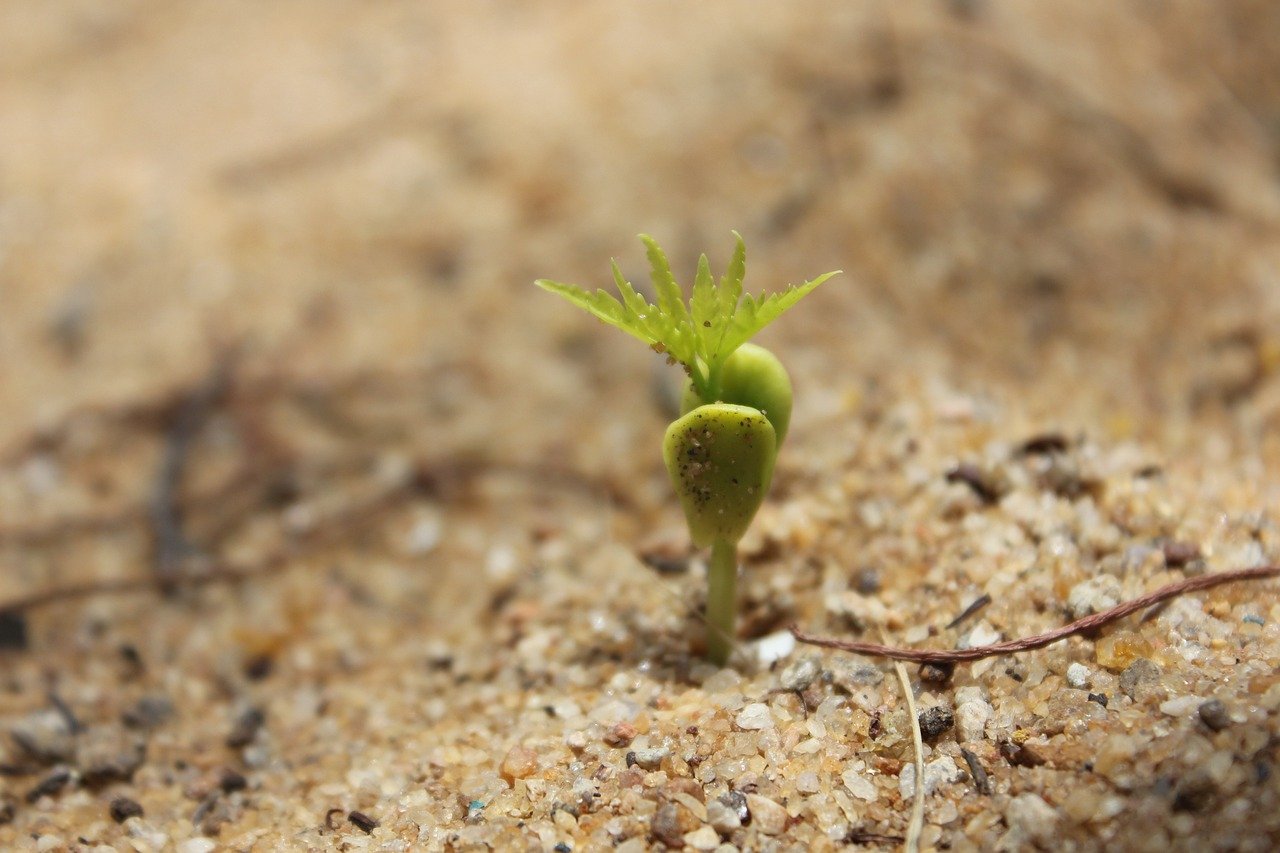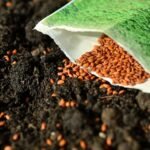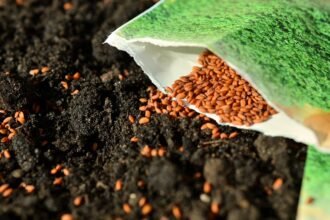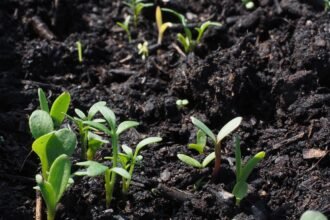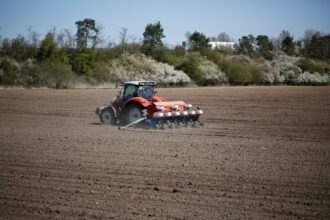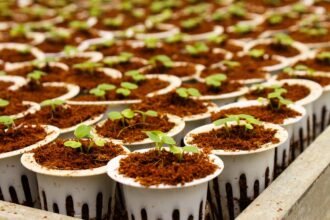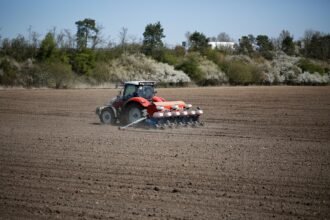Planting depth is one of the most important factors in ensuring the successful germination of seeds. While it might seem like a simple step, planting seeds at the correct depth can make the difference between a thriving plant and one that struggles to grow. Too deep, and the seed may not have the energy to push through the soil; too shallow, and it may dry out or fail to establish roots properly.
In this guide, we’ll explain why planting depth matters, how deep you should sow different types of seeds, and the best practices for ensuring healthy seed germination.
1. Why Planting Depth Matters
Planting seeds at the right depth is essential for several reasons:
- Germination Conditions: Seeds need the right environment to germinate. If they’re too deep, they might not receive enough light or warmth. If they’re too shallow, they might dry out or be too exposed to the elements.
- Root Development: Proper planting depth ensures that roots have enough space to grow deep and strong, which is crucial for the plant’s stability and nutrient absorption.
- Protection from Elements: Seeds planted at the right depth are better protected from surface conditions like drying winds or light frost. The soil above the seed acts as a buffer, maintaining moisture and protecting against temperature fluctuations.
2. General Guidelines for Planting Depth
The general rule of thumb for planting depth is that seeds should be buried at a depth that is roughly 2 to 3 times the size of the seed. However, this can vary depending on the size and type of the seed. Below are the guidelines for different seed sizes:
- Small Seeds (e.g., lettuce, herbs, and petunias):
- Planting Depth: 1/8 to 1/4 inch deep.
- Why: Small seeds need light to germinate, so they should only be lightly covered with soil or simply pressed into the surface. Some even germinate just under the surface of the soil.
- Medium Seeds (e.g., beans, peas, carrots, and zinnias):
- Planting Depth: 1/4 to 1 inch deep.
- Why: These seeds are large enough to handle deeper soil, but they still need to be close to the surface to access light and warmth. Medium-sized seeds generally don’t require much depth to establish themselves.
- Large Seeds (e.g., squash, cucumbers, pumpkins, and corn):
- Planting Depth: 1 to 2 inches deep.
- Why: Large seeds need more room to germinate and develop strong roots. These seeds benefit from being planted deeper in the soil, where they can access moisture and nutrients more easily.
3. Factors to Consider When Deciding Planting Depth
While the size of the seed is a primary factor, there are other considerations to help determine how deep to plant:
a. Soil Type
- Light, Loamy Soil: In lighter soils, such as sandy or loamy soils, seeds can often be planted a little deeper because the soil is loose and well-draining. These soils allow the seed to easily push through to the surface.
- Heavy, Clayey Soil: In heavier, clay-based soils, it’s better to plant seeds a bit more shallowly to avoid waterlogging, which can prevent seeds from germinating.
b. Temperature
- Warm-Season Plants: Seeds like tomatoes, peppers, and cucumbers, which need warmer soil to germinate, should be planted at the depth recommended on the packet, usually around 1/2 inch to 1 inch, to ensure they stay at the correct temperature.
- Cool-Season Plants: Seeds for cool-season plants like peas and carrots can be planted a bit deeper (about 1 inch) to ensure the soil remains cool and moist, promoting good germination in early spring.
c. Water Availability
- Seeds need moisture to sprout, but different depths may require different water retention. Shallow seeds are more vulnerable to drying out, especially if the weather is hot. Deeper-planted seeds may have better access to moisture stored deeper in the soil, particularly in drier conditions.
4. Planting Depth for Specific Plant Types
Let’s look at some specific plant types and their recommended planting depths:
a. Vegetables
- Leafy Greens: Lettuce, spinach, and kale are typically small seeds, so they should be sown at a depth of 1/8 to 1/4 inch.
- Root Vegetables: Carrots, radishes, and beets are medium-sized seeds and should be planted 1/4 to 1/2 inch deep.
- Beans and Peas: Beans and peas are larger seeds that should be planted 1 to 2 inches deep.
- Tomatoes and Peppers: These warm-season vegetables require a depth of 1/4 to 1/2 inch.
b. Flowers
- Small Flowers: Flowers like marigolds, petunias, and pansies, which have small seeds, should be sown 1/8 to 1/4 inch deep.
- Medium Flowers: Zinnias, sunflowers, and cosmos are typically medium-sized seeds and should be sown 1/4 to 1 inch deep.
- Large Flowers: Sunflowers and some perennial flowers may require a depth of 1 to 2 inches.
c. Herbs
- Small Herbs: Basil, thyme, and cilantro require 1/8 to 1/4 inch deep sowing.
- Medium Herbs: Oregano, rosemary, and parsley should be planted 1/4 to 1/2 inch deep.
5. How to Determine Depth for Seeds
You don’t always need to rely solely on seed packet recommendations. Here are a few practical tips to ensure you’re planting your seeds at the right depth:
- Measure Using a Stick or Ruler: Use a small garden stick, ruler, or your finger to make small holes in the soil at the recommended depth.
- Use a Seed Dibber: A seed dibber is a small gardening tool used to make holes at precise depths. This tool is helpful for ensuring even planting depth across rows of seeds.
- Plant in Rows or Grid Patterns: For larger plantings, such as vegetables or flowers, plant your seeds in rows or grids to maintain consistent depth and spacing.
6. Common Mistakes to Avoid
To ensure your seeds germinate and grow successfully, avoid these common planting depth mistakes:
- Planting Too Shallow: Shallow planting may expose seeds to dry conditions or make them vulnerable to predators like birds or insects.
- Planting Too Deep: If seeds are planted too deep, they may not have the energy to break through the soil, leading to poor germination.
- Overcrowding: Even if seeds are planted at the correct depth, overcrowding can lead to poor air circulation and competition for nutrients, leading to weak growth.
7. Conclusion
Planting depth is crucial for seed germination and the overall success of your garden. By following the general rule of planting seeds at a depth of 2-3 times their size and considering soil type, temperature, and water availability, you can create the ideal conditions for your seeds to thrive. Whether you’re sowing tiny herbs or large vegetables, understanding the right depth for each type of seed will give you the best chance for a healthy, productive garden. Happy planting!

